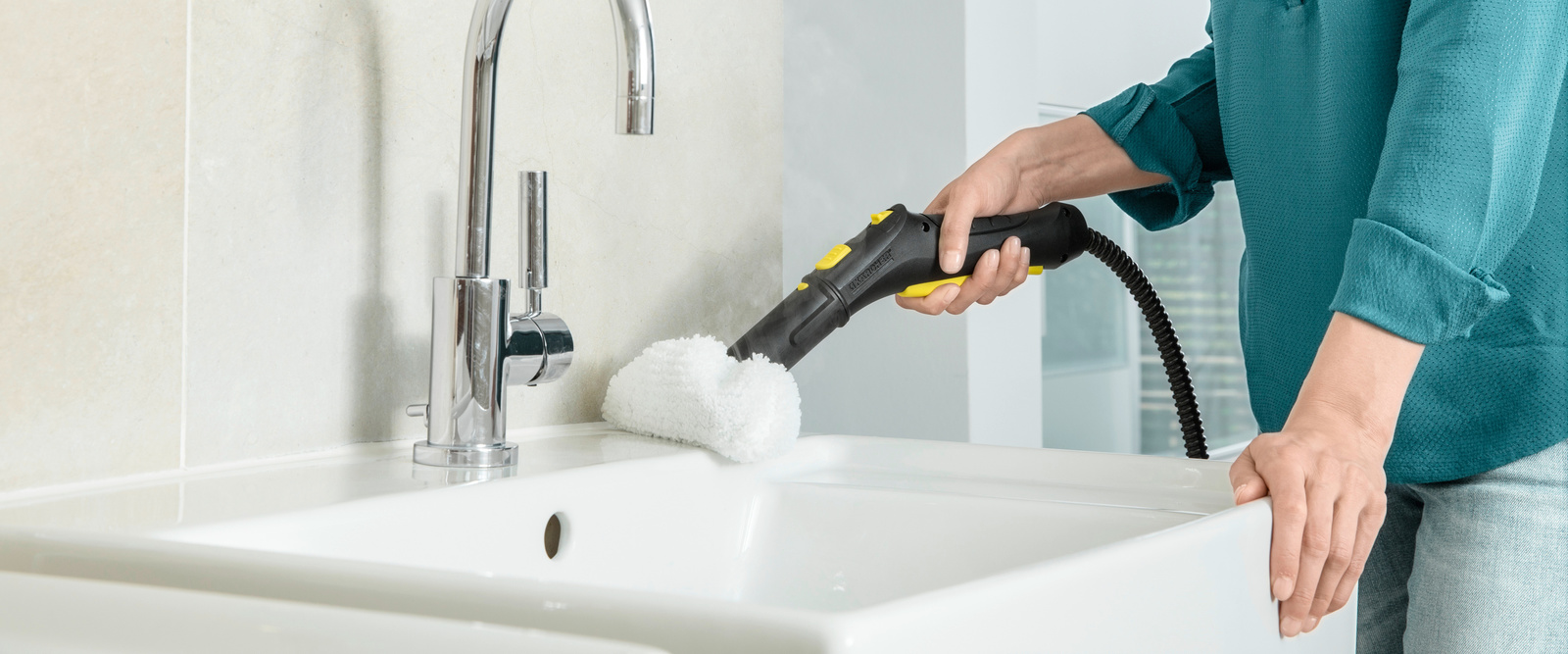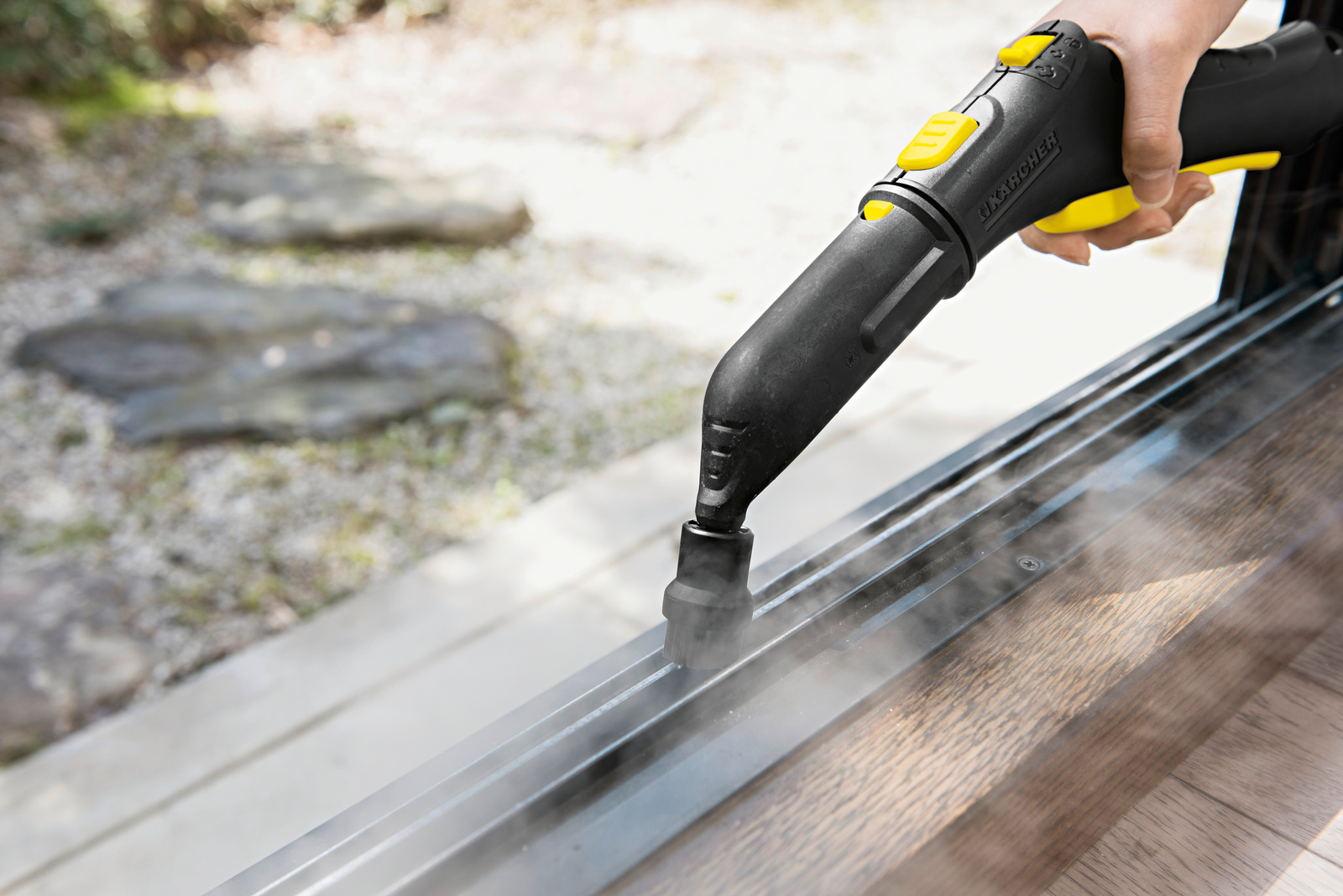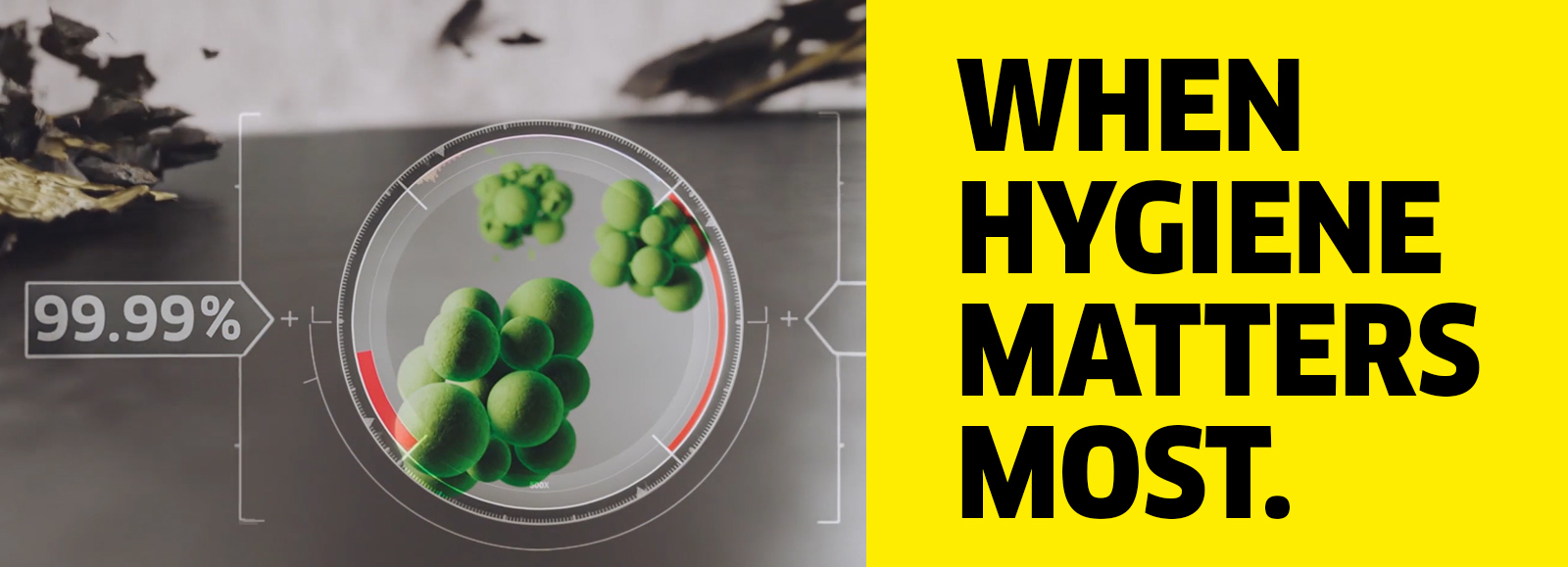Steam cleaners for home users: hygienic cleaning without chemicals
Steam cleaners not only remove stubborn dirt, but they are also an effective remedy against viruses and bacteria. We explain what makes cleaning with steam so special and what to look out for when using it.

Hygienic cleanliness with steam: eliminates up to 99.999% of enveloped viruses
Steam cleaners are noted for their pore-deep cleanliness and effective performance without chemical cleaning agents. During periods of increased hygiene awareness, these properties are more in demand than ever. The devices can be used almost anywhere in the home and are suitable, among other things, for hygienically cleaning door handles, fittings and surfaces.
If used properly, Kärcher home steam cleaners remove up to 99.999% of enveloped viruses*, such as the coronavirus or influenza, and 99.99% of common household bacteria** from hard surfaces. At the present time, disinfectants are to be reserved primarily for outpatient and inpatient care environments, whilst steam cleaners can make a valuable contribution to general hygiene in the home.
*Tests have shown that with spot cleaning of 30 secs at max. steam level with the Kärcher home steam cleaner 99.999% of enveloped viruses such as coronavirus or influenza (excluding the Hepatitis-B virus) can be removed on typical household, smooth, hard surfaces (test-germ: Modified-Vaccinia-Ankara-Virus).
**When thoroughly cleaning with the Kärcher steam cleaner 99.99% of all common household bacteria will be killed on typcial household, smooth, hard surfaces, provided the cleaning speed of 30 cm/s at max. steam setting (test-germ: Enterococcus hirae). With Kärcher professional steam cleaners SG(V) this is 99.999%, according to EN 16615:2015-06, on PVC floors. (test germ: Enterococcus hirae ATCC 10541).

Why does steam clean so well?
Steam cleaners offer greater hygiene and higher cleaning performance than conventional manual cleaning methods with detergents. The secret of cleaning with steam lies in the combination of steam and temperature. Water is heated in the device until it boils - this creates hot steam. This steam then leaves the accessories (floor nozzle, hand nozzle, etc.) at around 100 ° C. The tiny steam particles are thrown against the surface up to 170 km/h. As a result, the steam gets into tiny cracks and crevices and cleans where ordinary cleaning textiles cannot reach. Stubborn and greasy dirt is loosened in a matter of seconds, after which cleaned surfaces can stay clean for longer.
Important notes for steam application
The hot water steam emerges at around 100 °C and is cooled down with increasing distance. In order to combat viruses effectively, the nozzle must therefore be guided directly over the surface. It is also important to ensure a sufficient cleaning duration - ideally this should be 30 seconds on one area using the maximum steam setting. The microfibre pads used must then be washed at a temperature of at least 60 °C in a standard wash programme (not Eco).
Allergy sufferers and parents can breathe easy
People suffering from allergies benefit in two ways: In contrast to cleaning solutions, steam condensation does not leave any potentially allergenic residues on the cleaned surface. Also, steam binds dust, which means that no allergens are whirled up. This also noticeably improves the indoor climate and reduces the burden on the respiratory tract.
The absence of chemical cleaning agents is also particularly relevant if there are small children in the household. Babies crawl across the floor and like to put objects in their mouths. Allergic reactions or skin irritation caused by detergent residues are no longer an issue with steam.


Suitable for continuous operation
Cleaning for hours with chemical cleaning agents can irritate the respiratory tract; this can be avoided with steam cleaners. Since steam cleaners only need electricity and water, they can also be used for an almost unlimited time - with many models, the water can even be refilled during operation.


